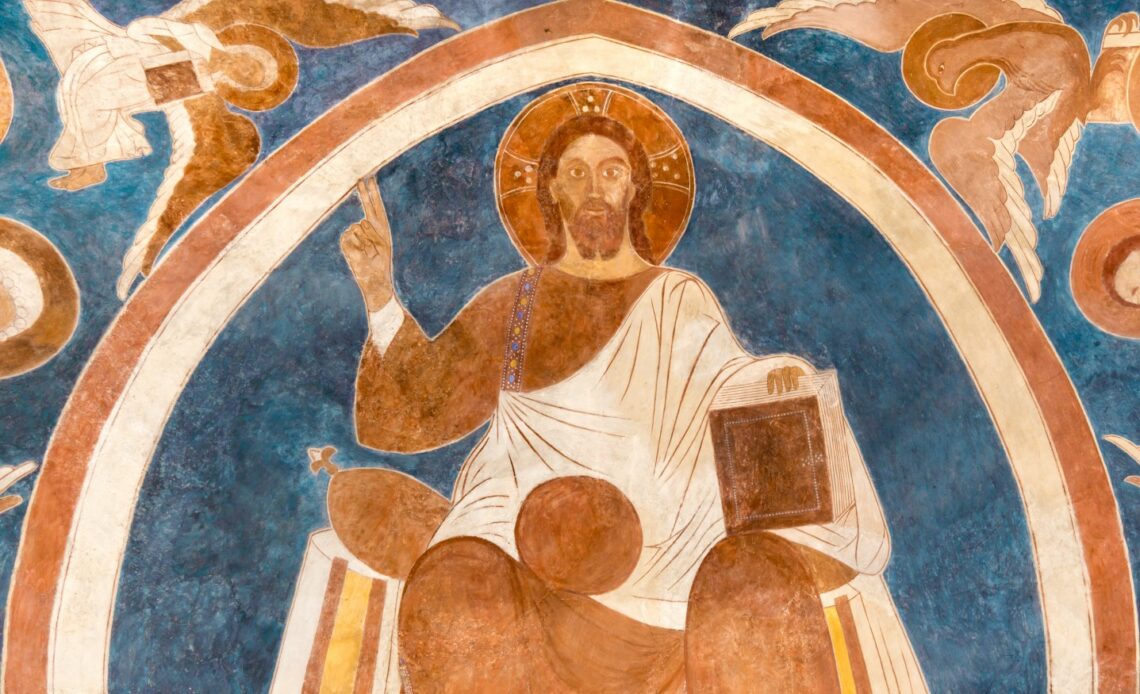In the book of 1 John, the apostle has a tendency to write in rather black-and-white terms. He is either on one side of a matter or another. For instance, John speaks of the way that when someone loves his brother, he is in the light. On the other hand, when someone hates his brother, he is in the darkness. John also says that if someone says he is without sin, he is a liar. He is rather blunt in his approach in writing to the churches in which he was the overseer.
It is thought (and is most likely the case) that the epistle of 1 John was written to a group of churches in Asia Minor, which is modern-day Turkey. This group of churches is also thought to be composed of the same churches that are listed in the book of Revelation, another of John’s books.
In 1 John 3:4-6, John once again approaches his readers in rather stark terms. He makes it clear that he is leaving no room for his readers to justify sin or rationalize away any aspect of their life that is not wholly devoted to God.
Practicing sin is transgression
He starts by drawing a direct line between sin and lawlessness. Scripture says, “Whosoever committeth sin transgresseth also the law: for sin is the transgression of the law” (KJV, 1 John 3:4). When the Bible speaks of sin, it means that someone has missed the mark.
What is the mark in which a person should aim for? The aim is the law of God or, maybe better yet, God’s perfect standard of righteousness. When someone commits sin, that same person is said to have missed the mark. The picture that is presented for the reader is that of an archer who aims for his target, pulls back his bow, and fires away; yet the arrow falls short of his intended aim. He pulls back his bow, he fires away, and yet again he misses his mark. This illustration is the sad reality of humanity. The Bible tells us in Romans 3:23 that everyone who has ever lived has sinned against the Lord.
Moreover, the Bible says that when someone sins against the Lord, this is also deemed a transgression of the law. When someone transgresses the law, that same person oversteps his bounds. The law attempts to place boundaries and parameters on a person’s life. When someone sins, he goes beyond the boundaries of the law, and in this, he is said to transgress the law.
Jesus came to take away sin
While all of humanity has transgressed the law, there is hope that can be found in Christ. Scripture says, “And ye know that he was manifested to take away our sins…” (1 John 3:5). We can see in 1 John 3:5 that Jesus came for a purpose. One of the purposes of Christ’s incarnation was to take away the sins of man.
It would be interesting to ask one hundred people what comes to mind when they read this verse or a verse such as the following: “… thou shalt call his name JESUS: for he shall save his people from their sins” (Matt. 1:21). Surely there would be a large group of people, most likely the vast majority, who would think about the forgiveness of sin or being saved from the wrath of God.
While thoughts such as those previously listed are good thoughts to have, these thoughts may very well speak to man’s tendency to make much of forgiveness and little of sanctification. John tells us that Jesus was manifested to take away sin. Matthew tells us that Jesus came to save His people from their sins. It is important to note that Christ’s work does not stop at justification; in a sense, it just starts there.
Christ came to do away with sin entirely in the life of the believer. The first step is forgiveness; then comes an ongoing process of being saved from the power of sin.
In Christ, there is no sin
One of the reasons that Christ desires to rid people of sin and not simply forgive people of their sin is that in Christ, there is no sin. Scripture says, “… and in him is no sin” (1 John 3:5). The Christian is called to be like Christ. Thus, the Christian must recognize that in Christ, there is no sin. The Christian also must recognize that the Scriptures say that a believer is in Christ, and Christ is in the believer. Scripture also uses language that depicts a believer as a member of the body of Christ, and the Bible tells us that a union has been formed between the believer and Christ.
It is amazing to consider the fact that He Who knew no sin became sin for us. In Christ, there was no sin, but in love, Christ took upon Himself the sins of humanity. He hung upon a tree and became the curse for us. The earth turned pitch black as the Father lamented over the sin. But the sinless One, Who became sin, although He died in our stead, did not stay dead. He defeated death, rose from the dead, is highly exalted, and will be glorified forevermore.
The believer is said to be united to this risen and glorified Christ.
Those who abide in Christ will not persist in sin
Therefore, the logical progression flows smoothly from John’s pen, as it were. Scripture says, “Whosoever abideth in him sinneth not…” (1 John 3:6). Here we can see another example of the way that John writes in a black-and-white type of manner. He says rather bluntly that if someone abides in Christ, he will not sin.
It is helpful to read the book of John properly while also maintaining a proper tension between John’s words and that of other writers. As one looks at the whole of Scripture, he will see that sin is present in all of humanity, believer or unbeliever. As one looks into the book of 1 John, he will see that earlier John said, “If we say that we have not sinned, we make him a liar, and his word is not in us” (1 John 1:10). In this portion of Scripture, we can see that John makes it clear (and also includes himself in the discussion by saying, “we”) that everyone commits sin and needs to confess their sin before God.
So what is John saying in 1 John 3:6? He is saying that those who abide in Christ will have their lives characterized by obedience rather than sin. Learning to read the book of 1 John in this way can be helpful. However, the reader must also be on guard so as not to water down John’s words to the point in which he loses his convictional element in the process.
John said what he said, and the reader must take his words seriously.
Habitual sinners do not know God
John continues to elaborate on the matter when he says, “… whosoever sinneth hath not seen him, neither known him” (1 John 3:6). When someone truly sees Christ, he will be transformed into the same image from one degree of glory to another.
Prior to John’s words in 1 John 3:6, he made it clear in 1 John 3:2-3 that when the believer sees Christ at the return of Christ, he will be changed into the image of Christ. John also says in the same portion of Scripture that in the here and now, when the believer sets his hope on Christ (looks to Christ), he will be changed in this life.
When someone takes 1 John 3:6 in its context, he will see that when someone truly knows Jesus, that same person’s life will be changed. A life of knowing Christ does not consist of perfection, but it does consist of direction. John is adamantly concerned about the overall direction or trajectory of one’s life.
Final prayer
Father, I thank You once again for the work of Christ. I thank You that in Christ, I can find freedom from sin. Help me to believe this truth, and increase my faith. You are worthy of my devotion. Help me to confirm my calling and election, Lord, I pray. In Jesus’ name, Amen.


